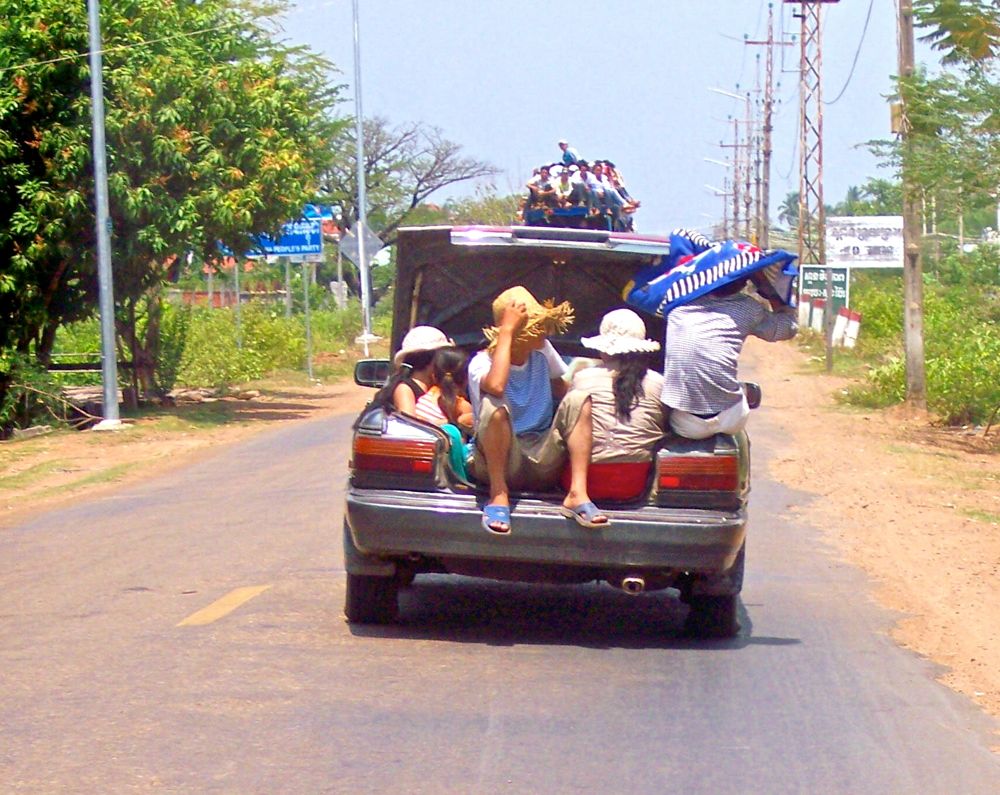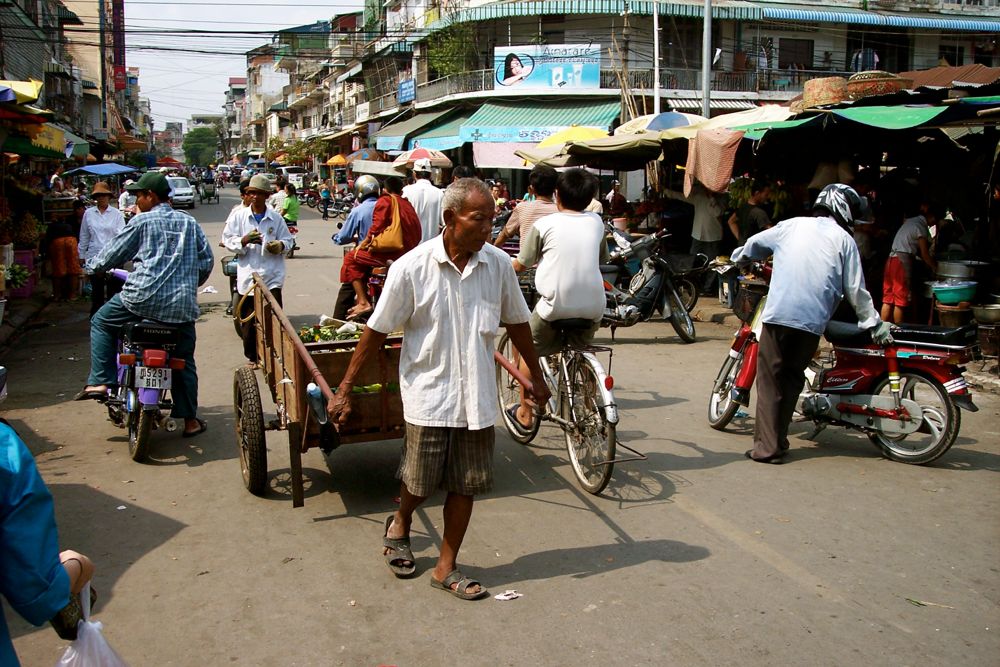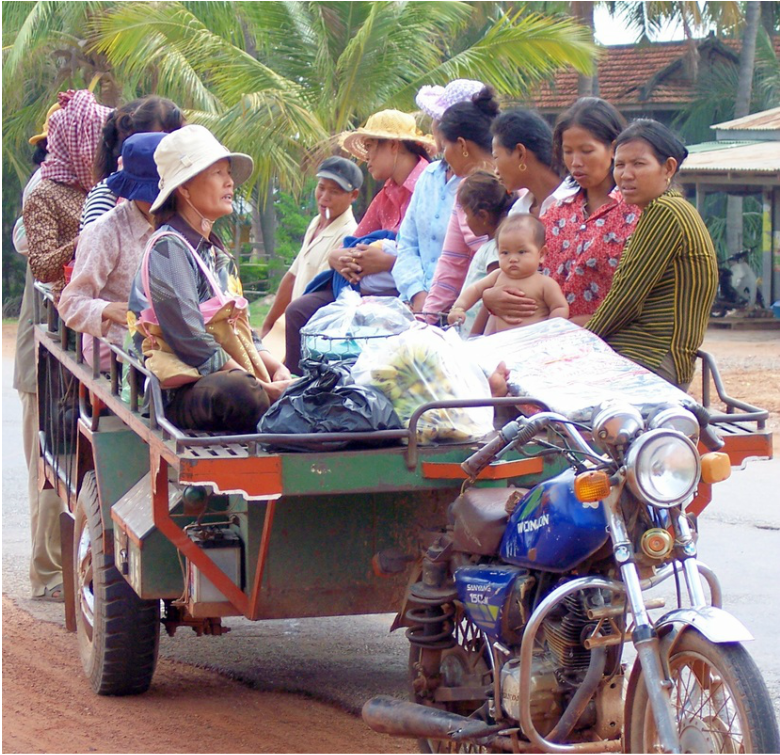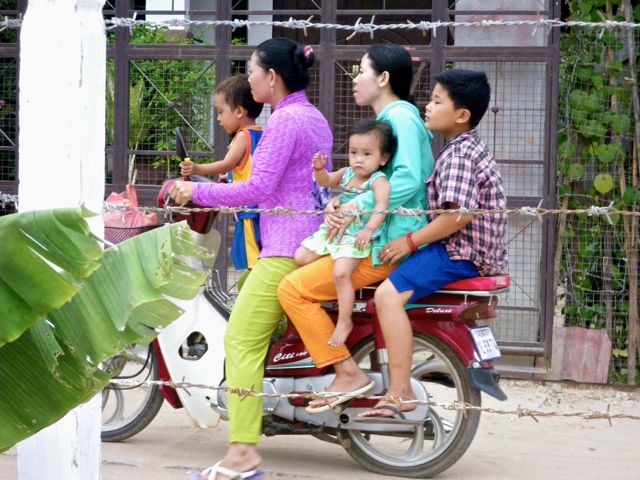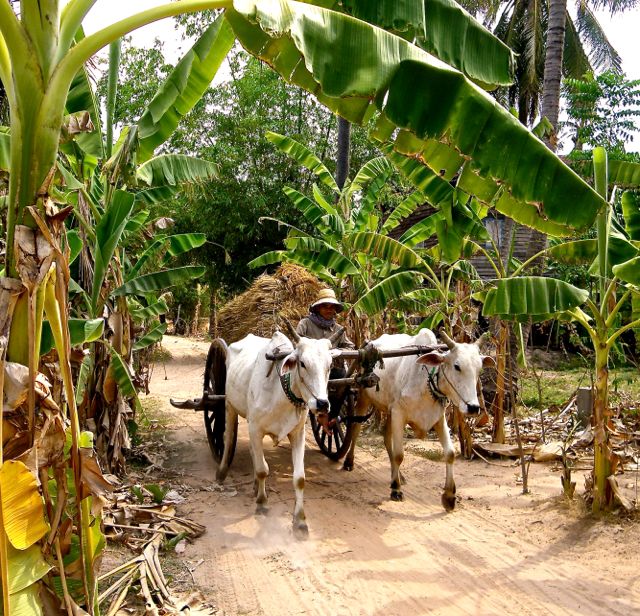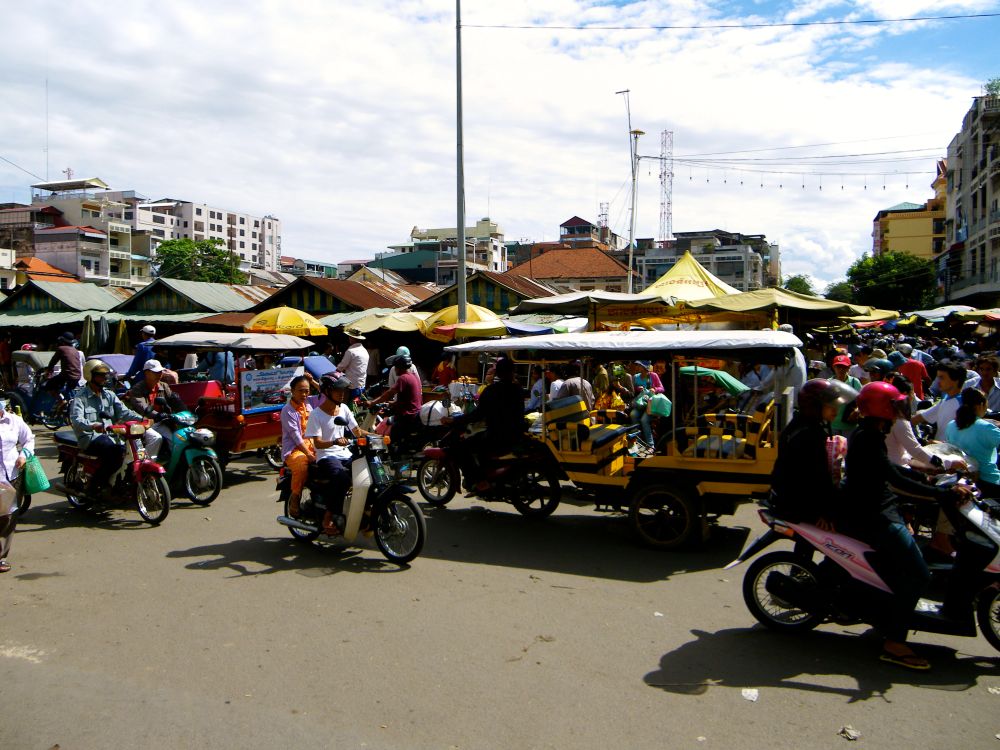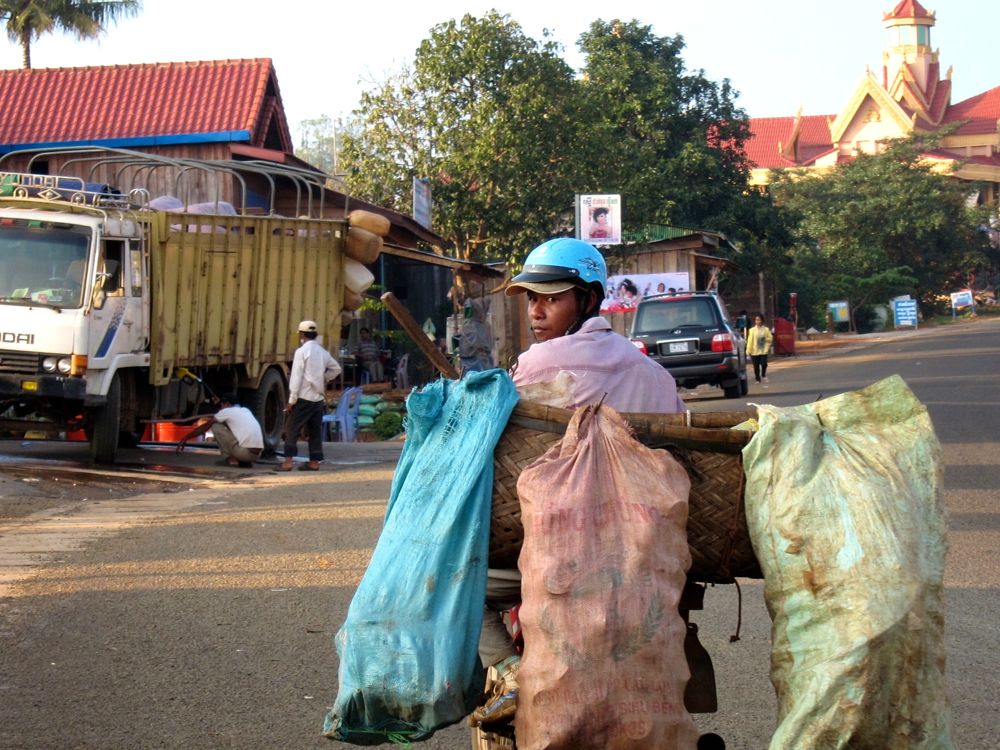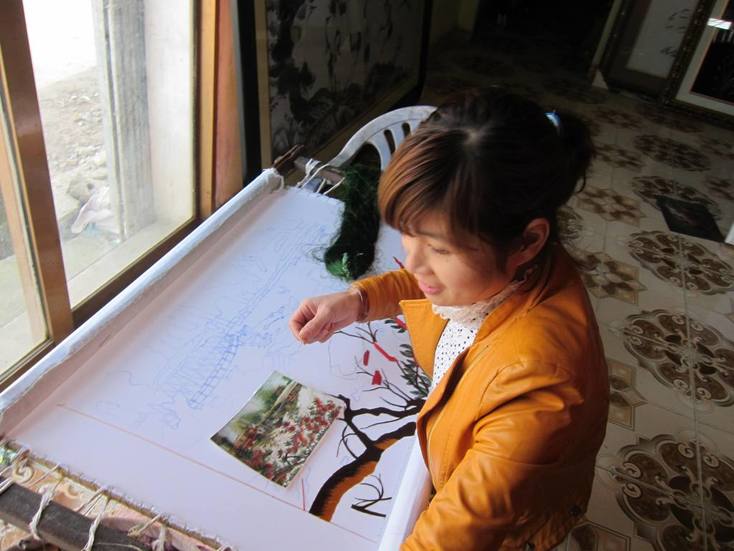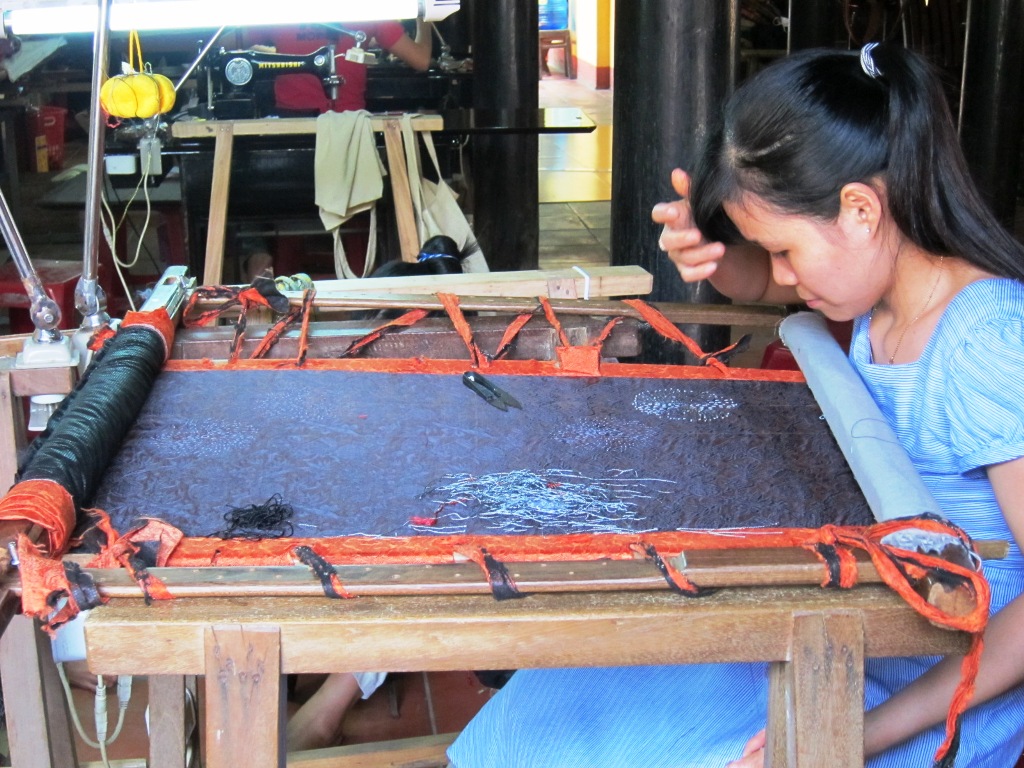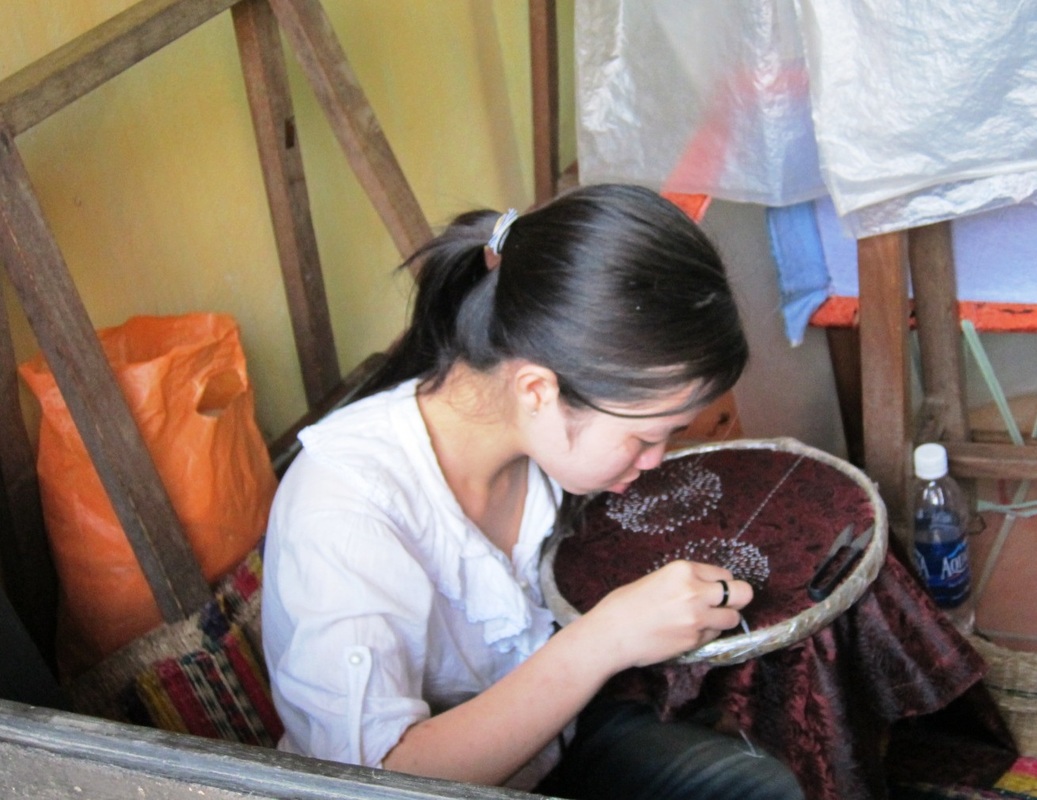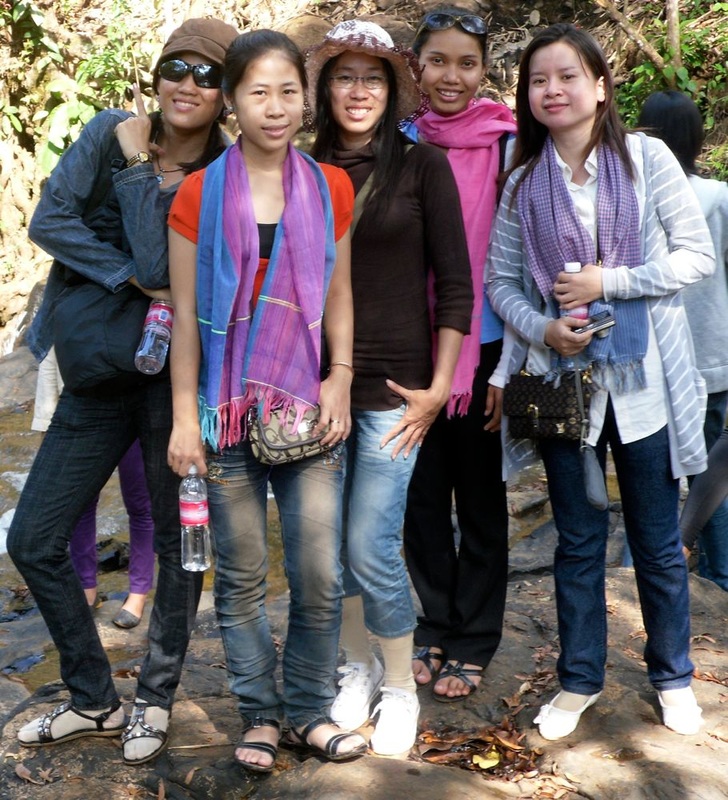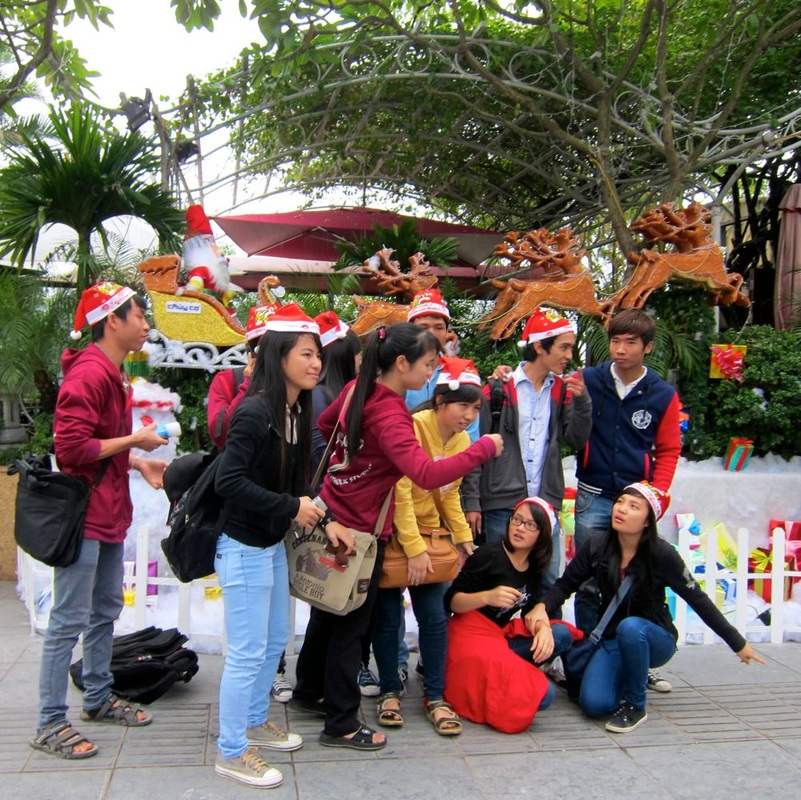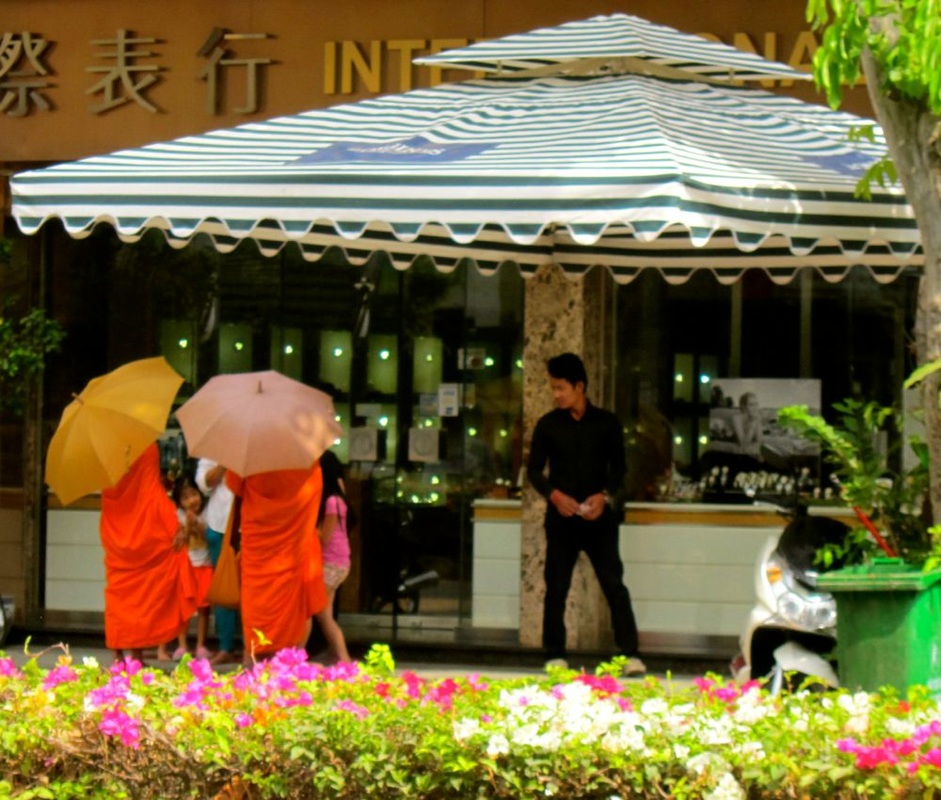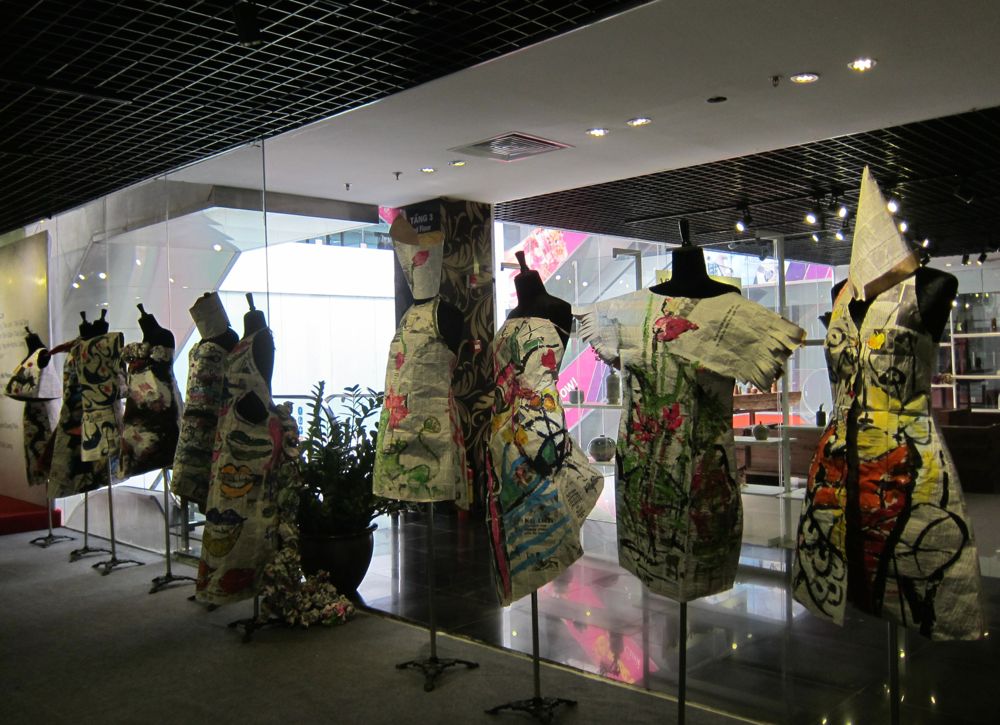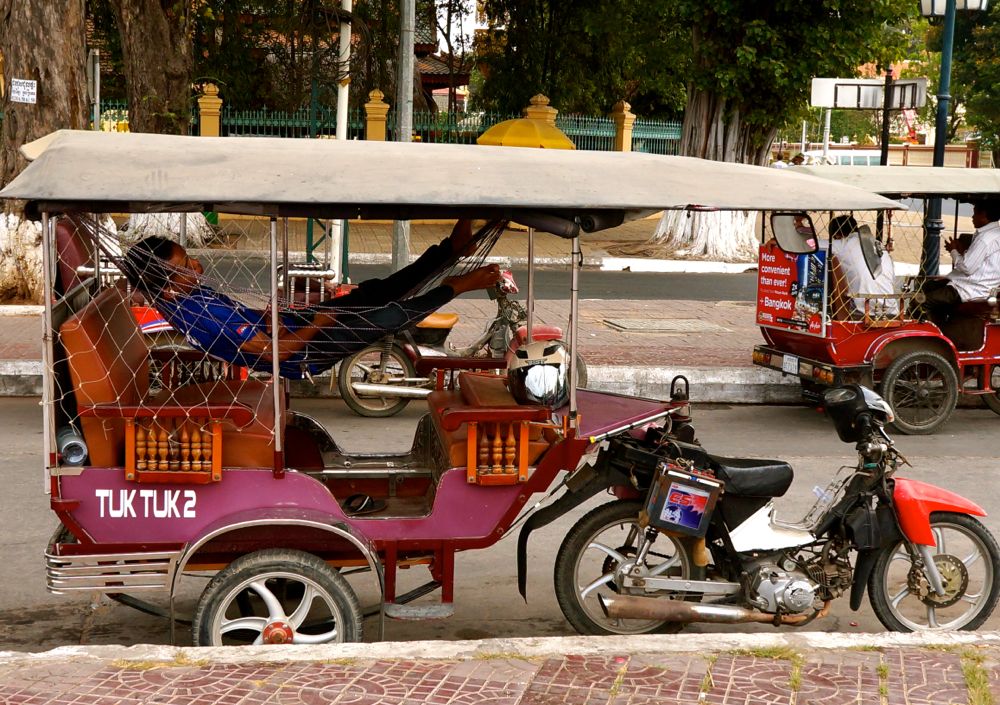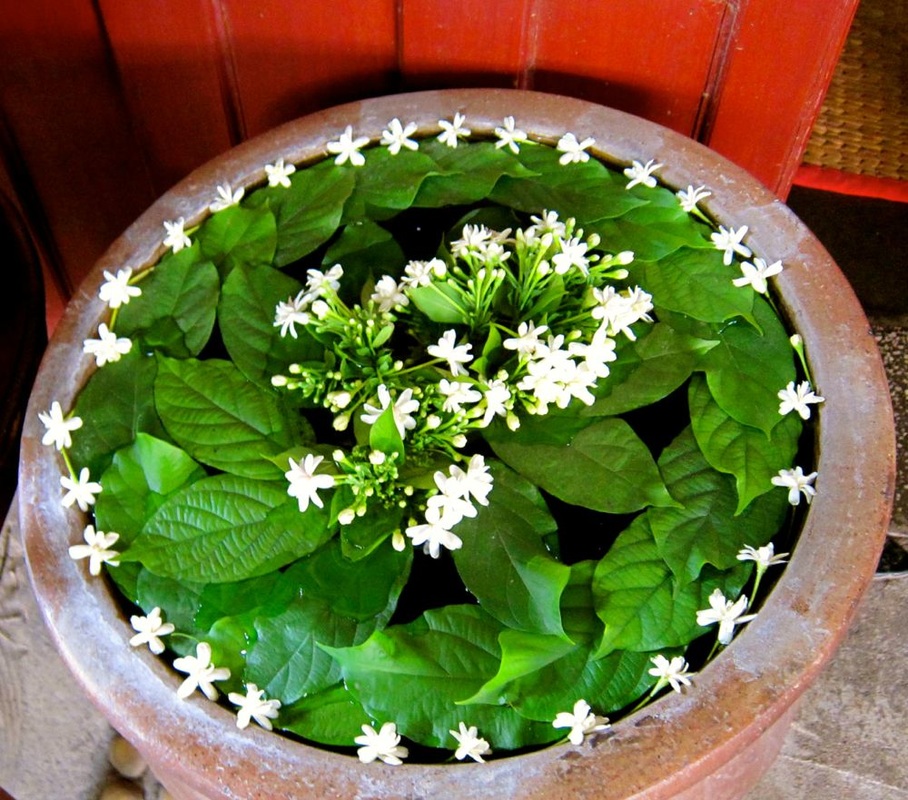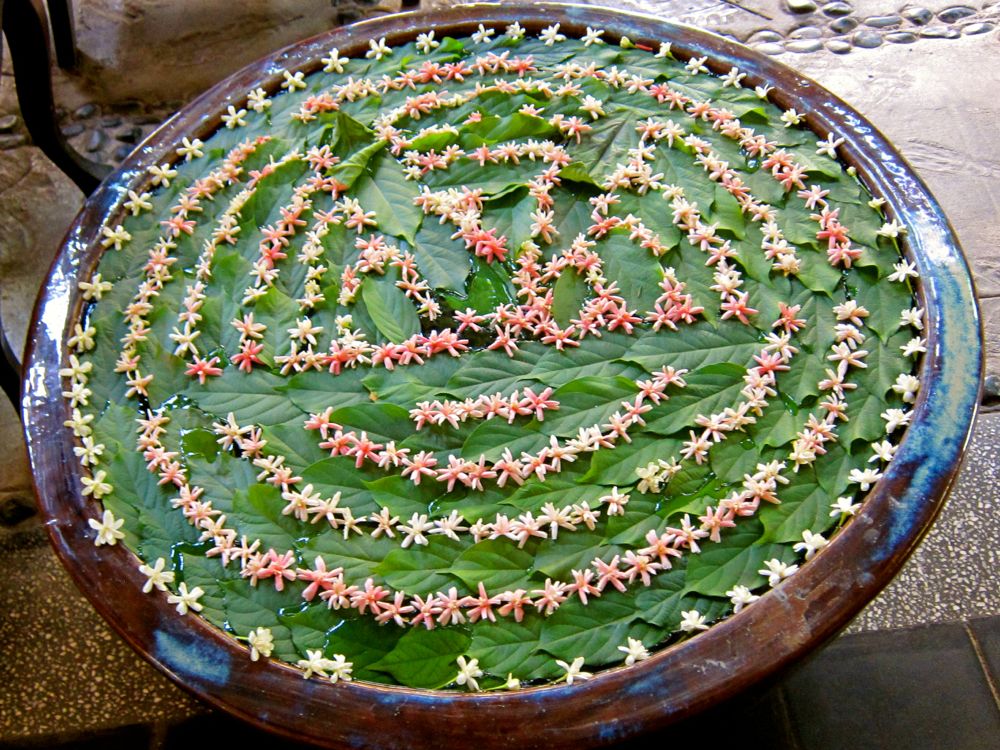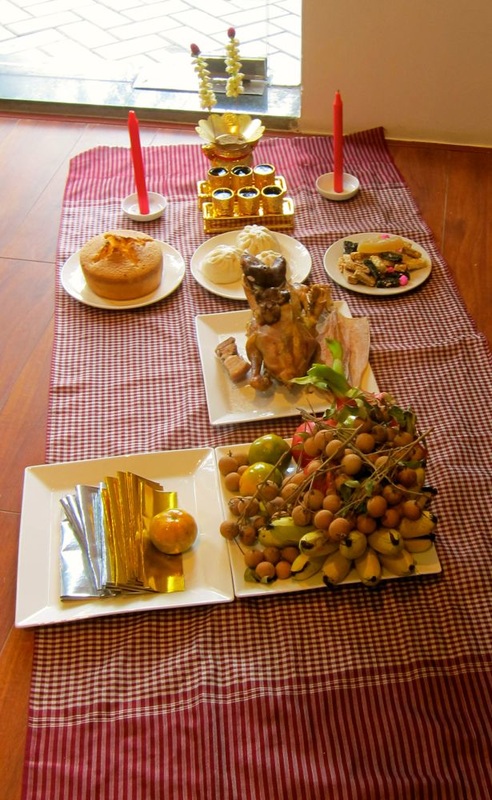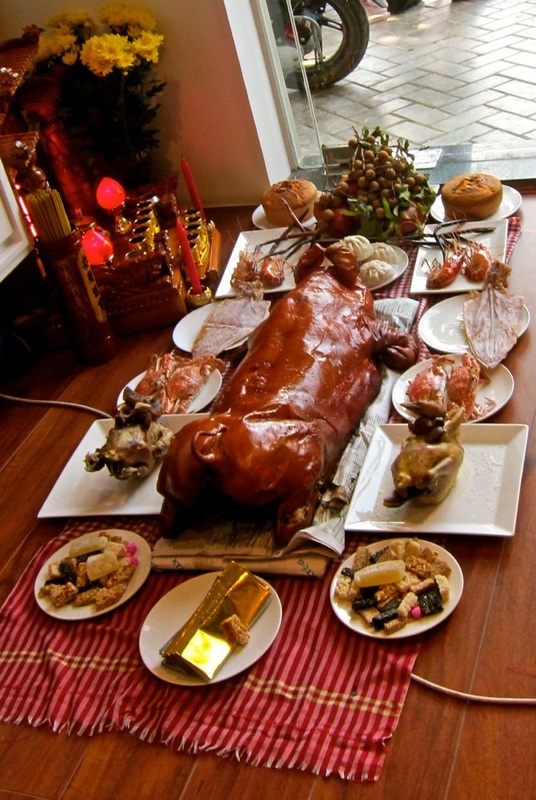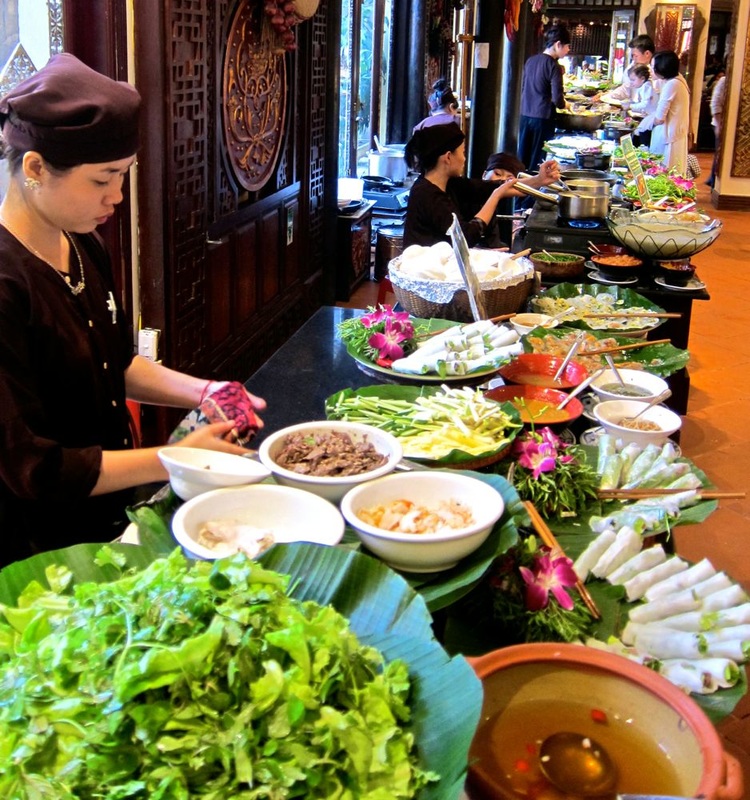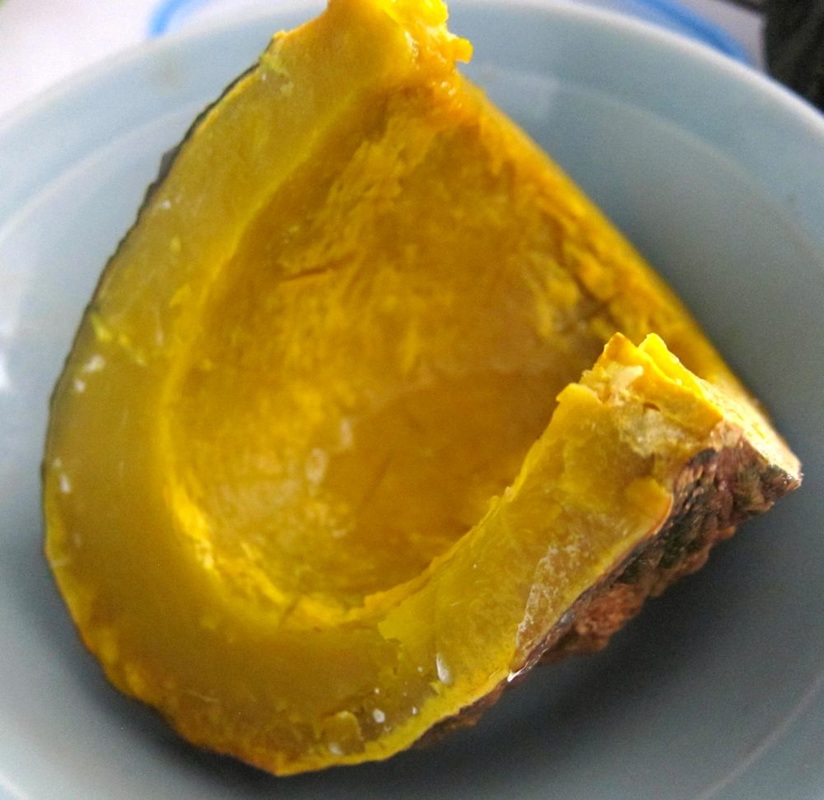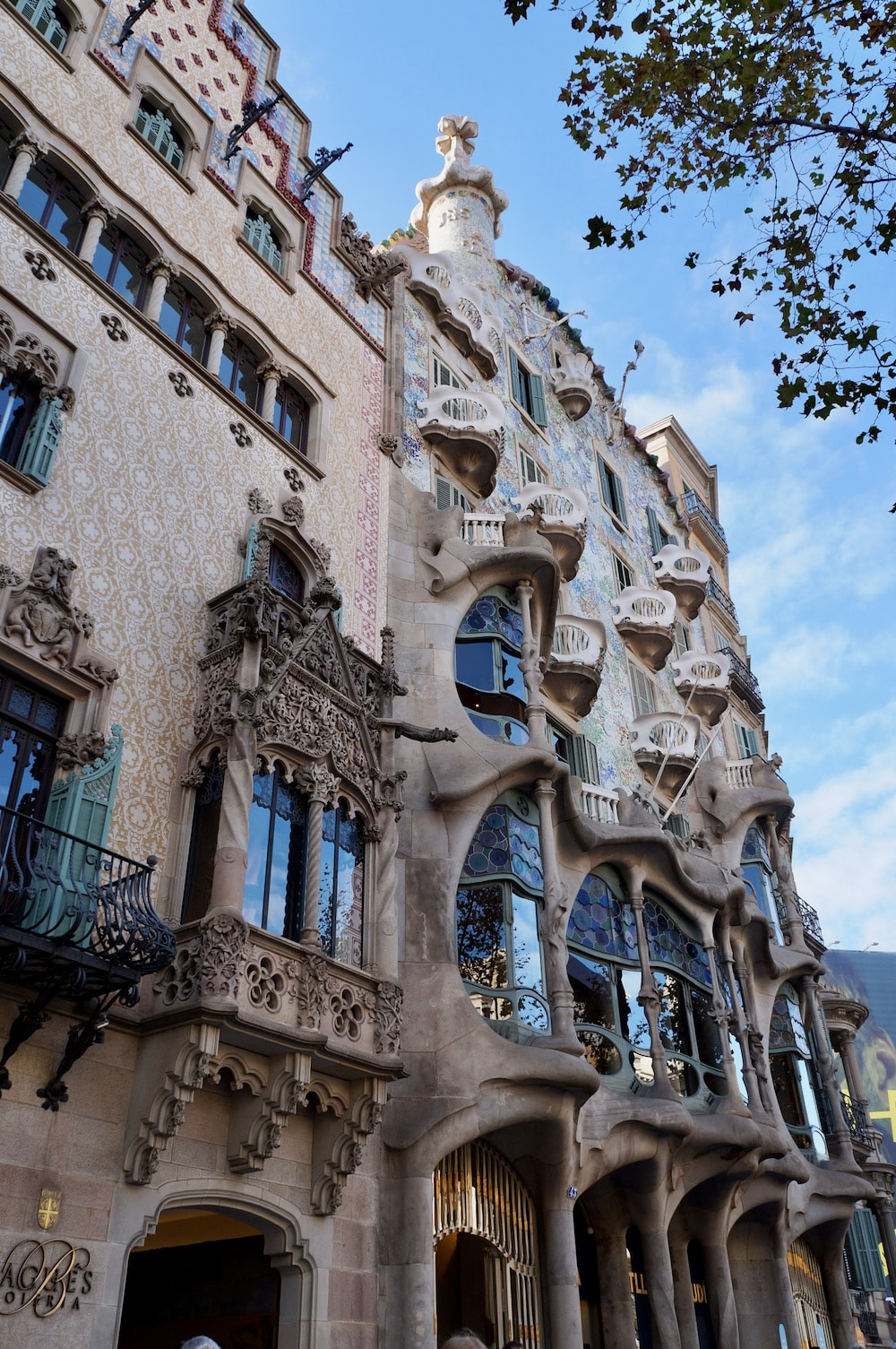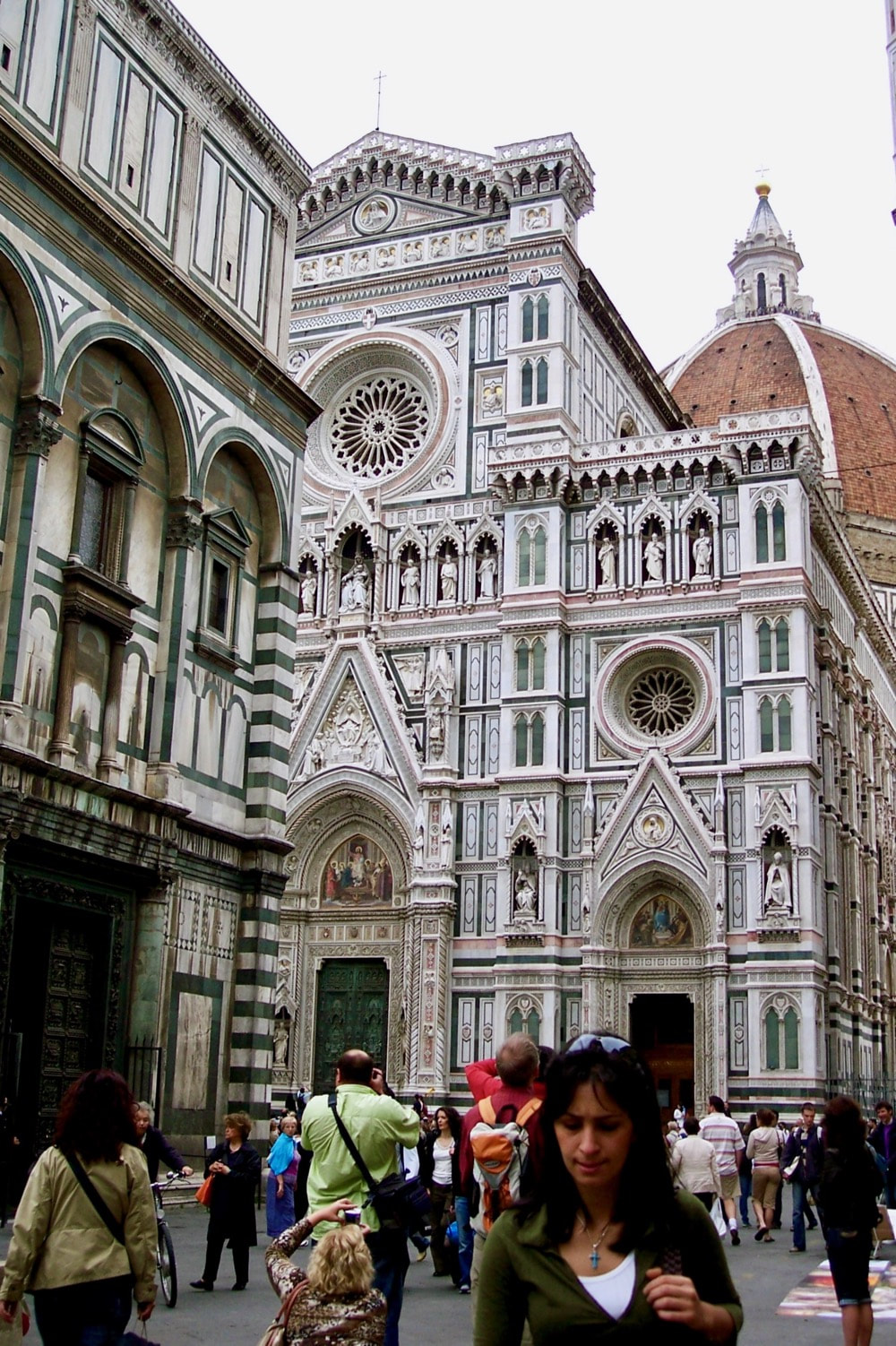|
Far from the roar of the jet engines and the howl of the ultrafast train and the snarl of the super highways and the flail of the helicopters, there are countries where travel is slow, difficult, sweaty and hammering but small groups sharing space in ox carts and the remorgs and tuktuks and whacked out old taxis share a companionship and a complete absence of urgency which is the antithesis of modern haste.
It's not just a difference in travel or difference in speed and comfort. It's a whole different relationship with the world around you with the rice paddies, the palm oil trees, the muddy rivers and the very simple villages. It's not just a different world, it's really a different planet and even though space travel is not involved the distances are almost beyond imagination.
Religion is integrated into life in everything that happens. The family isn't just important. It's everything. The place of elders, the role of women, the links to the animals that live inside the communities is so far from Chicago or London or even Istanbul. It's hard to describe these different planets that exist in Africa, Southeast Asia and South America if you haven't sat in a tuktuk on a rotted country path on the weekly trek to the market. When you look at the photographs, you'll see just a hint of transport in some of these remote planets and that hint perhaps will open a door for you in the different worlds we live in.
The transport on top is called Remorg, a favourite of factory workers to go to work. When you go out of Phnom Penh, chances are you'll see several of these right in front of garment factories or on the road ferrying workers to factories.
You will often see the moto on the roads of Cambodia. Several have come to appreciate the use of helmets but only the drivers are required by law to wear one. Most of the time, they only wear their helmets when they know there are police in the streets they are going. But in many cases, you'll see parents wearing one and the kids none.
Like those in sunny climates, their preoccupation is the hat to keep them from getting dark so even when it is hot, it is not unusual to see them wear long sleeve tops and pants.
In the rural areas, the moto is still far from the reach of many farmers who prefer to use their work animals to transport their produce.
In many cities, you will find the moto is the king of transport. For the foreigners, the tuktuk is their preferred ride. You can see some are wearing helmets and others not but most drivers do as the police try to implement this.
Pigs, garbage, chicken, log pipes, huge crystal frames, roofing and wood materials are often transported by moto. They seem to be able to carry so much.
Embroidery has been a tradition in Vietnam for many, many years. It is taught early in schools as part of educational activities for girls. Young ladies are expected to be able to make some of their household linen using their embroidery skills.
The lady in the picture below has an embroidery shop in a tiny village of Quat Dong not far from Hanoi. Several other women in the village display their embroidered items in the store which she happily sells for them. It makes her happy to enable these women to earn extra income without leaving their homes. She, herself, embroiders in her shop when there are no customers. Her skills are excellent and when you look at some of her embroidered items, they look like paintings.
Close to Hanoi are several craft villages. It is interesting to go and visit these places. For those interested to know more, here's the link.
Are we losing our own uniqueness as a culture, as a nation? Are jeans and Ts expressions of the common standards we have placed ourselves in?
Even our dogs are socialised into this global culture, fast making us all look the same. But is this really the unity we desire? Do we really want to see everyone homogenised into a consistent blob?
Is it homogeneity now? Homogeneity seems to result from all the international connectedness and travel taking place. We see the tuktuk drivers now moving from wearing long sleeve shirts and pants to shorts and t-shirts following the tourists they drive around. But, is this an external expression of the growing globalisation of culture or simply imitation of perceived wealth?
Does homogeneity in culture worry you?
Is this really a thing to worry about? As we lose unique languages and cultures each year and what remains drifts to commonality, should we be concerned as inside of all these people following the global cultural norms there still exists the traditional cultural practices and beliefs. Cambodia just celebrated Khmer New Year and both young and old danced their traditional sways as they sang their traditional songs. They come to the temple in their traditional outfits and as they pray, and thou can you see how unique they are from you and I. Has our unique culture more staying power? Even the so-called internationalists who are at home in many cultures still define themselves with their own unique cultural identity and often, find themselves comfortable in the company of compatriots where they can share jokes and comments and smirks and know that they are understood. Maybe among those who set the ways in a country, often those who are well travelled and well connected, internationality is a reality but for most locals, life has not changed much. Television brings in the new fashion which gives the illusion of change. Maybe the trappings become more common, but the root culture seems to have more staying power. Of the Asian countries, Japan has always been the most particular about design but many other Asians are only beginning to have the same appreciation for it. They are not just doing design. They take a journey back into their tradition to find what they can use to express the unique attributes of their nation and their people. They dig far into the mountains and learn from their ethnic groups. We see traditional crafts making a revival and local designers improving them or incorporating them into their new creation. Asia used to be the place where you buy cheap manufactured clothes. This is now changing as many younger designers are trying to crack the international world of craft and fashion. There are as yet not many IMPeis but the idea of design is catching on. Lifestyle has changed, too. As more people in Asia become middle class, their tastes go beyond the merely utilitarian. They seek well designed products for themselves and for their homes. They also start to look for what will make them or their homes different. This creates a market for designers who open their studios or have a place in malls to display their designs. Yesterday, here in Phnom Penh, I visited Ambre of Romyda Keth, a Cambodian designer. It is full of beautifully designed clothes in imaginative colour mix paired with creatively fashioned accessories. I was surprised to see a wing of home accessories as well. In Vietnam, the last time I was there, the foreigners especially the Japanese worked with the locals to revive the traditional fabric and design unique to some of the indigenous groups. Indigo and hemp were once again used and enhanced. The weaving became much more refined. That started the other local designers to appreciate their own traditional fabric and ways of dyeing cloth. Some of them went further to learn the traditional techniques of the ethnic communities in weaving and making accessories. From here, they have improvised and improved the traditional designs creating unique accessories that are now coveted by many fashion enthusiasts. One Vietnamese designer in particular, Thao Vu, did just this in the hills of Cao Bang and to give expression to what she has learned there, she founded the fashion studio, Kilomet109. She recently got the British Young Creative Entrepreneur (YCE) Award. Here's a video showcasing what she does: The Hammock is at Work. The owner is not. In-between trips for clients, the Tuktuk drivers in Phnom Penh put out their hammocks and take a rest. The car drivers do this as well. They all have their hammocks at the back of the car. The clients can take time in their meeting or their shopping. No problem. Our drivers are doing just the right thing to do for their health and sanity.
Taking time out in-between activities at work may prove to be more productive. As the mind gets rested, the capacity to think out ideas and solutions improve. In most of Southeast Asia, it is not unusual for office employees, in the middle of the day, to put their heads down on their desk, if they're lucky to have a makeshift cot in one corner of the office, to have a nap. They have their mid break and they use it well. Maybe, this is an option to add to our current lifestyle. What do you think? Enjoy calm and serenity in your house by placing one of these pots. Get some flowers to float on the water in the pot. If you have the patience, you can create art forms like these ones. It exudes peace, serenity and beauty.
It brightens any corner and if you place flowers with a nice smell, it gives you a nice feeling as well. In one of these pots, sweet smelling jasmine flowers float on the water and the delicate smell fills the room. Isn't this a beautiful practice? To make offering to the Universe to thank the forces that be for the success of one's business? Maybe for some, it is just a superstitious act that doesn't achieve anything. But for those who believe, it is a gesture of thankfulness to the forces of the Universe that brought you blessing.
And it's aim is not to achieve something but to give back to the Universe. Maybe, in the hope of making the business more prosperous. Nothing wrong with that. But believe me, it does change some people. My Australian friend and I, going in that day in Red Apron, the top wine store here in Phnom Penh's Street 240, not only got curious but discussed the beauty of this practice. It certainly reminded us of the value of giving thanks and how beautiful it is to make that practice part of a culture. Imagine a mountain with no clouds or Eagles. Imagine an ocean with no sandy beaches or waves. Imagine a Georgian mansion sitting I a desert .well, that is a centre piece of beef or lamb or fish without side dishes. Side dishes are like the choir singing praise to a great soloist and they’re so easy to prepare. Here are some of the easy side dishes to prepare in no time at all. Hasty but healthy and tasty. In many Asian countries, it is so easy to just go and enjoy the variety of side dishes in the restaurants or the streets but if you have to prepare them yourself, here are a few that you can prepare in no time at all. 1. Sweet potato Cut it in half. Spear it with your fork in several places. Put some butter or bit of olive oil but this is really optional if you want to keep it much more healthy. Sprinkle a bit of cinnamon. Place in a microwave safe dish. Cover and put on High Heat for 7-8 minutes. 2. Squash Cut the squash in half. If you have a big squash, cut it to desired size. Remove the seeds and stringy bits. Spear with a fork in several places. Again, depending on your preference, add butter or olive oil. Sprinkle with cinnamon. Place in a microwave dish and put on High for 7-8 minutes. 3. Greens Our preference is for Mustard Greens, Bok Choy or Chinese Cabbage. Take out the damaged leaves and cut the bottom of Bok Choy. Place in a steaming pot. Just put a bit of water as you don’t need much time to cook it. Put enough water in your pot to just barely cover the greens, an inch or an inch and a half of water in your pot and when it starts boiling, remove immediately and strain it under flowing cold water. You can add your favourite dressing. 4. Mushrooms Cut mushrooms to desired pieces. Place a bit of olive oil in the pan. Add chopped or minced garlic. When the garlic turns brown, add the mushrooms. Add a pat of butter, a bit of salt and pepper. No herb or spice. Just enjoy the flavour of the mushrooms. When it’s well mixed, take it out. 5. Morning glory or Veggie Tips Prepare the morning glory or veggie tips by cutting the tops and soft stalks, at least half way from the roots. Discard the tentacles or hard stalks, some peel the stalks buy only if you have the patience. Add oil in the pan. Add chopped garlic and once brown, add the morning glory or the veggie tips. Add fish sauce or a bit of shrimp paste just to flavour it. It can be salty when you put too much. Saute a bit and remove from the pan. 6. Broccoli or Asparagus Steam broccoli or asparagus and sprinkle with lemon juice and a bit of Parmesan. Do not overcook. When you have no steamer, put an inch or an inch and a half, just enough water to barely cover the broccoli or asparagus. When it boils, take it out as it continues to cook anyway. A bit of crunch will not kill you. 7. Daal Put a cup of daal in the pot of about two and a half cups of water, and a tablespoon of oil. Add a cube of chicken bouillon, two small chillis seeded and chopped, half a large onion chopped up, 3 cloves of garlic Just allow it to boil slowly until it is cooked. You can add cardamon, curry, and Worcestershire sauce. No need to add salt when you use the chicken cube. Here's your bonus. A video of how to easily cook Okra (Bhindi). It is so easy, I immediately did it. |
For those who love travel, here are some of my top recommendations of places to visit.
Click on the picture to know more of these places: Archives
October 2021
|
